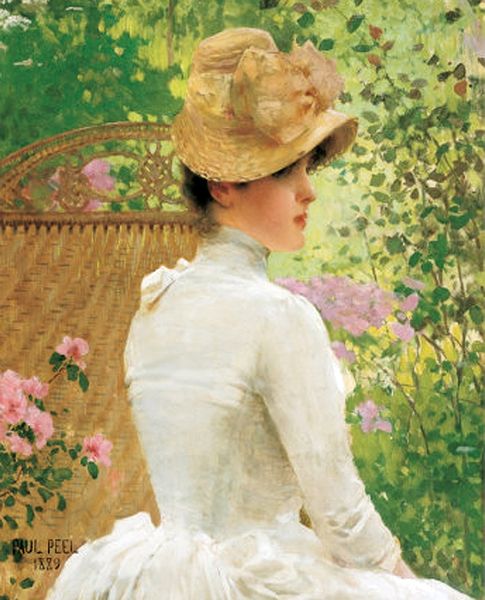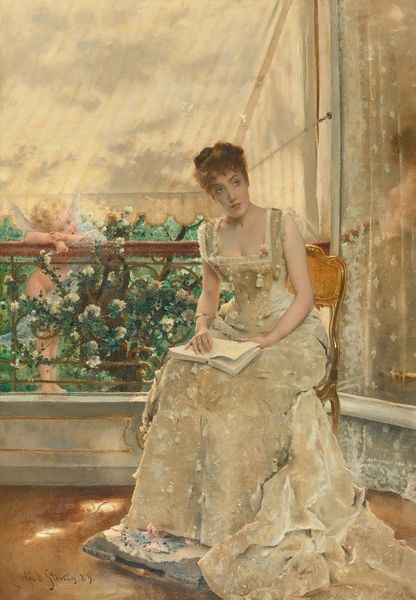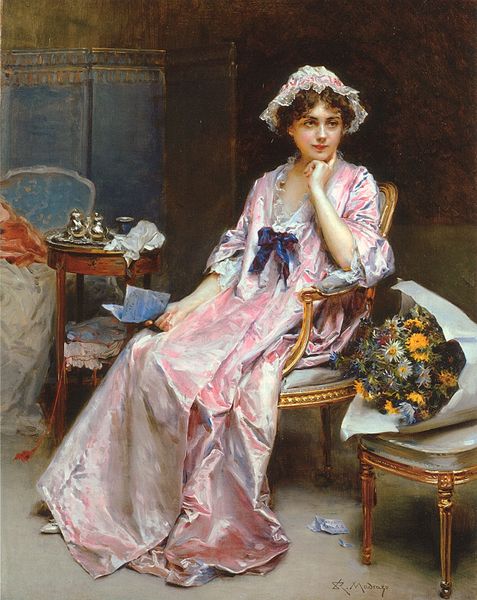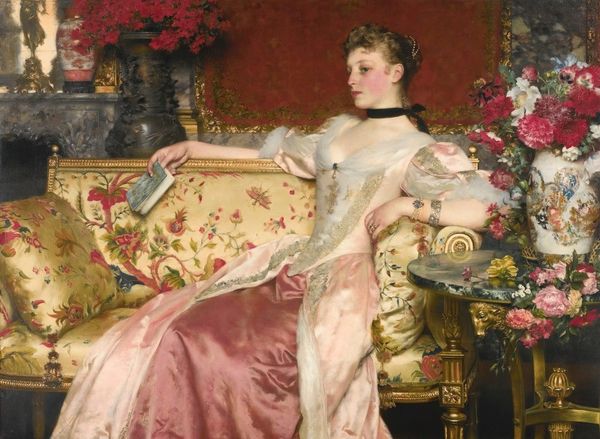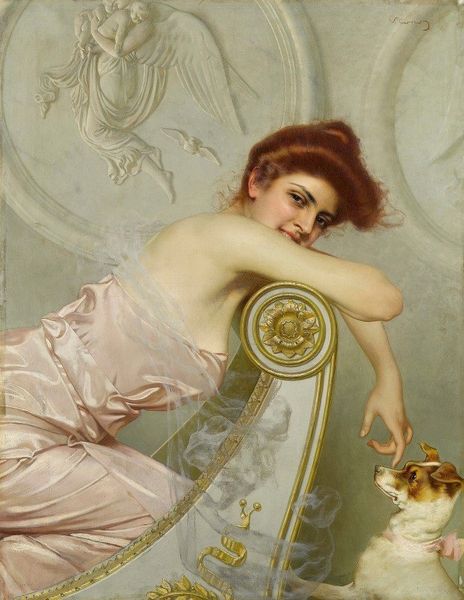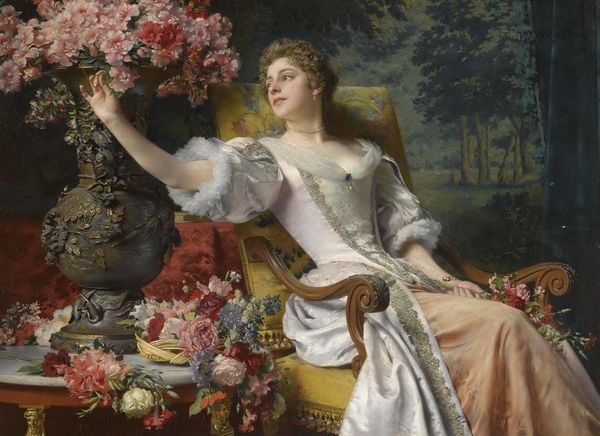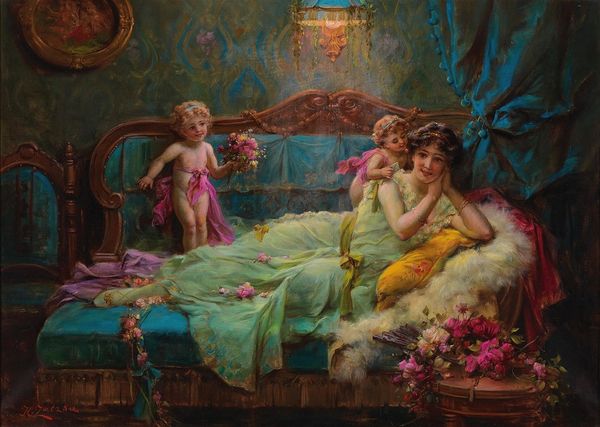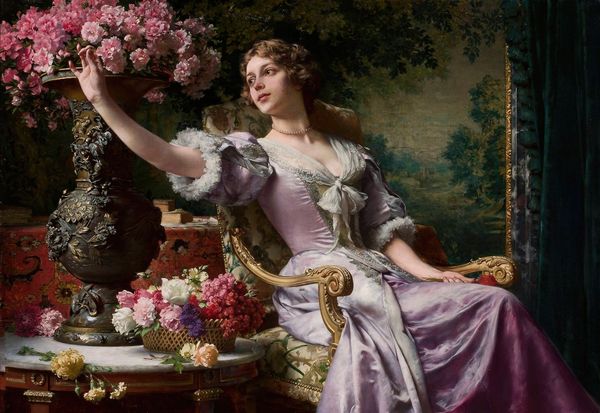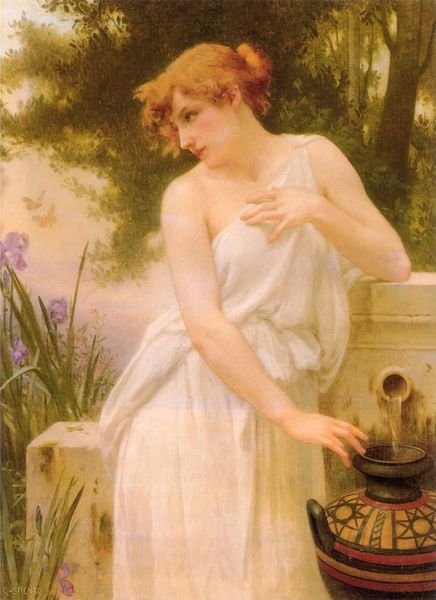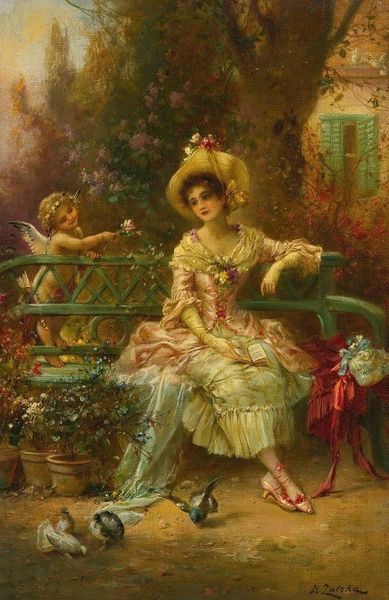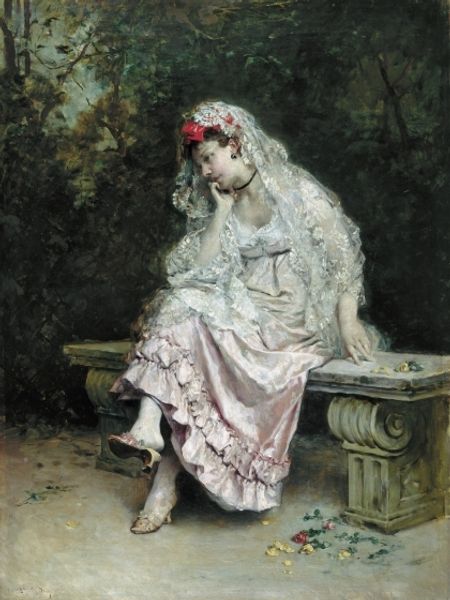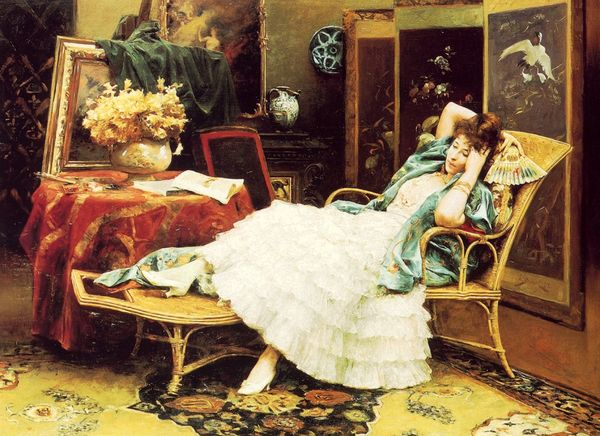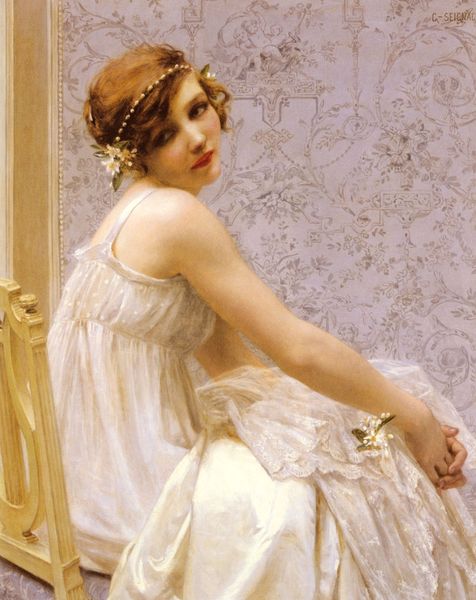
Copyright: Public Domain: Artvee
Editor: Here we have Vittorio Matteo Corcos’s "Alla fontana," painted in 1896 using oil paints. There’s a quiet elegance to this piece; the woman's white dress and wistful gaze create such a serene feeling. What historical narratives or contexts are bubbling beneath the surface? Curator: Well, beyond the immediate charm, this piece speaks volumes about the cultural aspirations of the late 19th century. Corcos, like many artists of his time, was navigating the shifting landscape of artistic patronage and the growing importance of public exhibitions. The "fancy picture," as it's sometimes called, became a vehicle for artists to display technical prowess and engage with bourgeois tastes. Editor: So it was, in a sense, art created for public approval? Curator: Precisely. Consider the woman's attire. The immaculate white dress, though visually pleasing, also signals a particular social status. How does that elaborate fountain setting play into this? Editor: It reinforces the message of wealth and refinement. But does this pursuit of beauty risk being just decorative, or did this "Academic art" also engage in socio-political discourse? Curator: It's a delicate balance. While the primary function might have been aesthetic, the very act of depicting such scenes reinforced certain ideals and power structures. These images helped shape public perceptions and legitimize social hierarchies. Do you see any possible tension between the public image and private lives suggested in the painting? Editor: I see that while she’s immaculately dressed, she seems slightly disengaged, almost melancholic. It’s as if she’s performing a role. Thank you. Curator: You’ve got it. Examining that tension makes us see this not merely as a pretty picture, but as a fascinating window into the social complexities of the era.
Comments
No comments
Be the first to comment and join the conversation on the ultimate creative platform.
